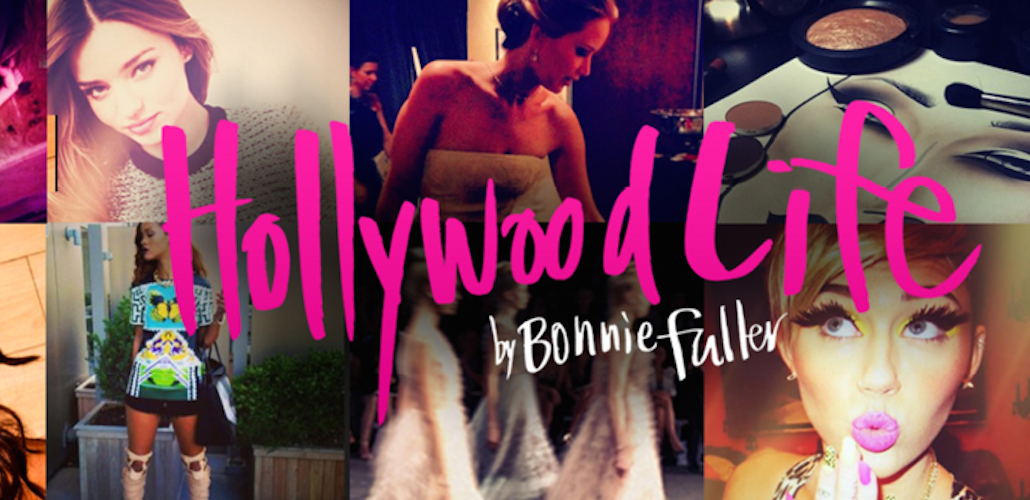

It’s been a while since we heard from Bonnie Fuller. The media veteran has spent the bulk of her career as an editor-in-chief at a stable of major magazines, from YM to Cosmopolitan to Glamour to US Weekly. Once called the “Joel Schumacher of editing,” Fuller jumped ship from a high profile (and reportedly quite lucrative) post as editorial director of American Media — publisher of Star, Shape and Men’s Fitness — in 2009 to take over as editor-in-chief of a new, little known site called HollywoodLife.com.
Hollywood Life is now coming up to its seventh anniversary. It now employs 30 people and Fuller claims monthly uniques, according to Google Analytics, are between 20 million and 35 million. ComScore puts the U.S. unique visitor count in September at 12 million; the highest number of uniques in the past year was 19 million in April. The site has enjoyed a year-over-year growth of 14 percent in 2016.
We sat down with Fuller to fill us in on the last seven years. Answers have been edited for clarity.
So where have you been?
Hollywood Life. We started from nothing. It used to be a placeholder site and now it’s really grown. We now publish 650 posts weekly and our mobile audience is 70 percent.
How was your transition from print to digital media?
Our audience is 70 percent female and 70 percent of those are in the 18-to-34 age range. I have done teen magazines, but mostly edited for this group. When I was overseeing American Media Magazines, we had Star and Shape and Fit Pregnancy, and Natural health and you could see that was when the newsstand numbers started to slip. Digital sites started popping up. My audience of young women was migrating online. I would see that young women had less interest in magazines. They would barely flip through them.
But magazines are still around.
Yes, but it’s down. One thing I always thought would be a barrier to digital engagement was the experience of a magazine. And then I saw them curling up in bed with their phones and laptops. Hollywood Life was really conceived with the understanding that a young woman has a connection to celebrities and details aspects of her life to celebrities.
So celebrity news as inspiration?
Celebrities were role models for fashion and beauty but they are also now role models for relationships. Women do model their lives and get inspiration from celebrities. And make decisions about relationships or careers or number of children they wanted based on that.
The current headlines on your site include a piece on Khloé Kardashian discussing why her family is attracted to black men. How do you reconcile celebrity gossip with covering inspirational things like this interview with Ashley Graham about being bullied as a kid?
Young women have different aspects to lives. They enjoy celebrities and feel close to them. The advent of reality television has done that. They feel like they really know their favorite celebrities. They watch them on TV and follow them on social media. On one hand, they feel connected to these people as part of a friendship circle. But also, these young women have personal issues that make them interested in inspirational issues. It doesn’t mean that because they are interested in celebrity news they’re not interested in news news.
What’s your approach on covering hard news?
Readers do see us their main news source. So when big news breaks, an earthquake or a the Boston Marathon bombing or the NYC explosion they would come to Hollywood Life. So now we cover a fairly broad range of news as well as celebrity entertainment.
But you don’t want to be — nor can you be — a CNN.
We get the initial news story out. The tone is not the same as CNN. We have a more personalized way of talking. A more emotional way of talking. We’ll say “This is terrible.” We’ll put in an opinion. As a story develops, people will want to know if young people were at the scene so we can tell it from the perspective of young people and young women.
You’re a reach-oriented publisher. You want big audiences. But a growing number of people are emphasizing deeper audience connections over mass.
We’ve still got room to grow. We need to make ourselves more known. But we also want to grow our own connection to the readers we have and the readers that we continue to get. I think that it’s both things. We’re focusing on the quality of our relationship.
Is Facebook a friend or enemy?
We have 5.3 million likes on Facebook. It’s important to us. But the lesson we’ve had to learn is we can’t be too dependent. We’re investing in video heavily — we have three video producers and we try to put a video in most of our posts.
Your company has blanketed reporters with pitches to interview you in the past week. Any reason for the sudden push?
We’re growing. We’re in the field with female millennials. When Prince died in April, that day was the biggest day we’ve ever had. We thought it was time to tell our stories.
More in Media

WTF is behind the explosion of faceless creators?
Brands are rapidly increasing their spending on faceless creators, showing the unique benefits of working with this type of influencer.

In Graphic Detail: As ‘Grow a Garden’ booms, a new report shows the marketing power of Roblox
The explosive growth of “Grow a Garden” has brought new attention to Roblox — and rejuvenated marketers’ interest in its advertising power.

Brand deals surge for golf creators as the sport’s popularity spikes
Golf is booming, and so is influencer marketing. As a result, golf creators are signing an unprecedented number of brand deals in 2025.





